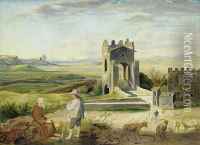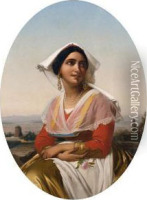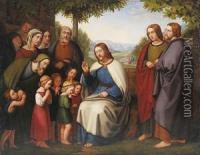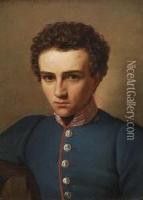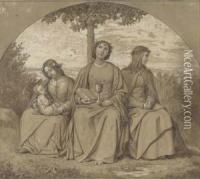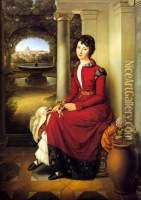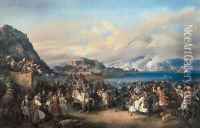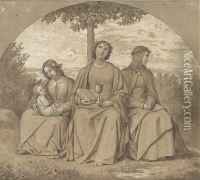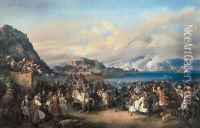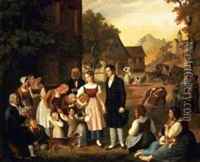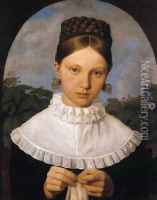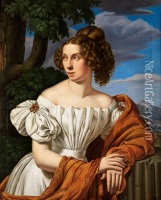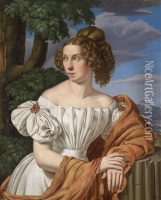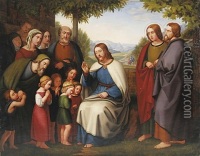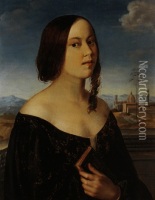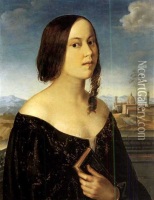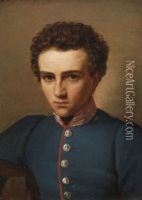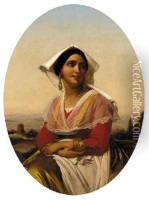Heinrich Maria von Hess Paintings
Heinrich Maria von Hess was a German painter, associated with the Nazarene movement, born on April 19, 1798, in Düsseldorf, Germany. He was one of three Hess brothers, all of whom were accomplished artists, contributing significantly to early 19th-century German Romantic art. Heinrich's early education in art began under the guidance of his father, Carl Ernst Christoph Hess, who was a court painter. This familial artistic environment nurtured his talents from a young age.
Heinrich's artistic journey took a decisive turn when he moved to Munich in 1813. It was here that he became deeply involved with the Nazarenes, a group of German artists who sought to revive the spirituality and sincerity they found lacking in contemporary art. They looked back to medieval and early Renaissance periods for inspiration. Hess's work, characterized by its religious themes, detailed execution, and emotional depth, was profoundly influenced by this movement.
In 1818, Hess traveled to Rome, which was a turning point in his career. The city, with its rich tapestry of art and history, provided endless inspiration. During his time in Rome, Hess became a central figure among the German artists there, contributing to the Nazarene movement's ideals and artistic projects. His works from this period are marked by a harmonious blend of religious devotion and classical beauty, capturing the essence of Nazarene art.
Heinrich Maria von Hess's most notable works include altarpieces and frescoes that adorn churches and buildings in Munich and Rome. His frescoes in the Ludwigskirche in Munich are particularly celebrated, showcasing his mastery in handling large-scale compositions and his ability to imbue his subjects with a profound sense of piety and grace.
Throughout his career, Hess also served as a professor at the Academy of Fine Arts Munich, where he influenced a new generation of artists. His teachings and works emphasized the importance of spirituality in art, a legacy that continued to resonate in German art long after his death in Munich on April 29, 1863.
Hess's contribution to the Nazarene movement and 19th-century German art remains significant. His devotion to religious themes and the revival of early Renaissance styles marked a departure from the dominant trends of his time, making him a pivotal figure in the Romantic art movement. His work not only reflects his deep spirituality but also his commitment to a form of art that sought to uplift and inspire through beauty, narrative depth, and moral clarity.
